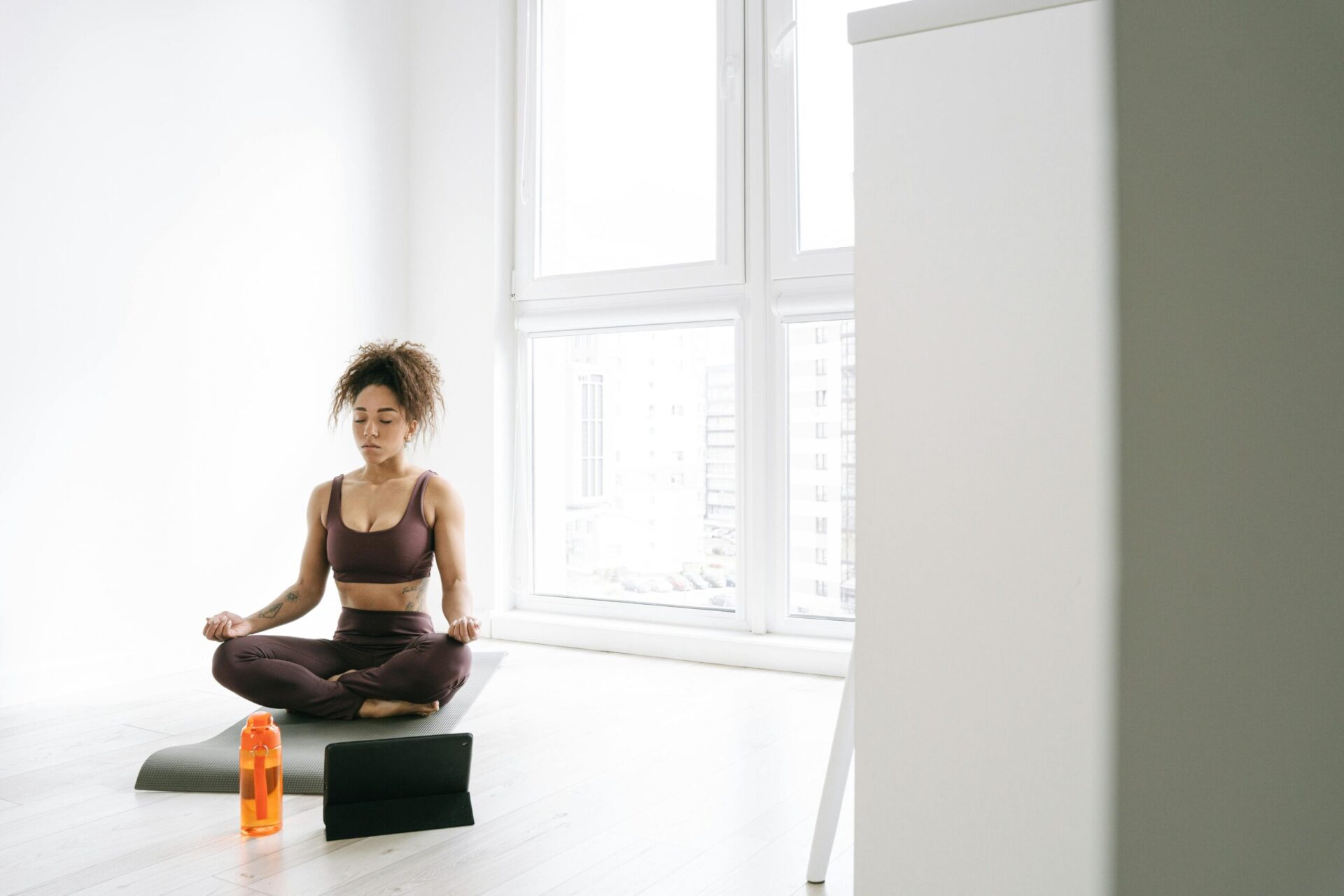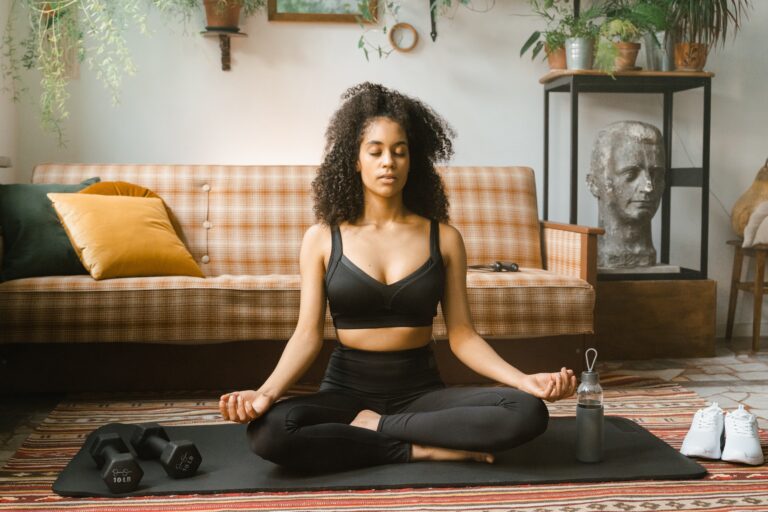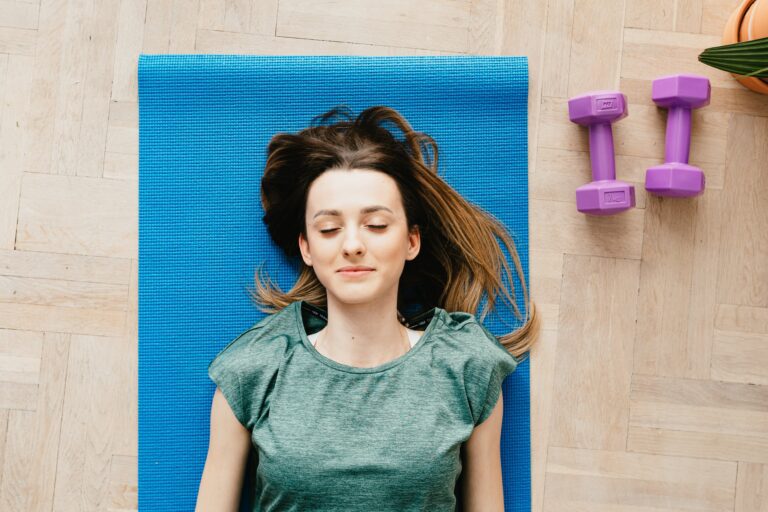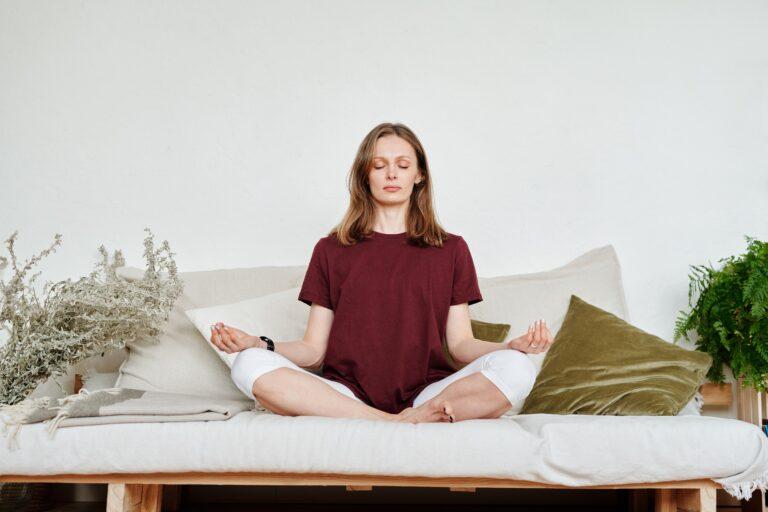Guide How To Start Meditation At Home For Beginners
Meditation is a wonderful practice that creates conditions for clearer vision, feeling more calm, and content with oneself. Please, do not cling to the belief that you must silence your mind. These expectations will lead you to frustration and a sense of failure, consequently deterring you from even trying to meditate. Let your goal not be to silence the mind, but rather to learn to observe your thoughts without judgment.
Discover The Incredible Benefits Of Meditation And Its Debunked Myths
We cannot expect that at the end of a busy day, when we sit down to meditate, we will suddenly calm down and completely stop the flow of thoughts. The shift from the dynamic functioning of the mind throughout the day to a moment of peace and silence is too significant to happen just like that. When we realize that we cannot control thoughts, we can consciously return to our breathing and allow thoughts to pass, allowing us to connect with the present moment and experience our inner peace.
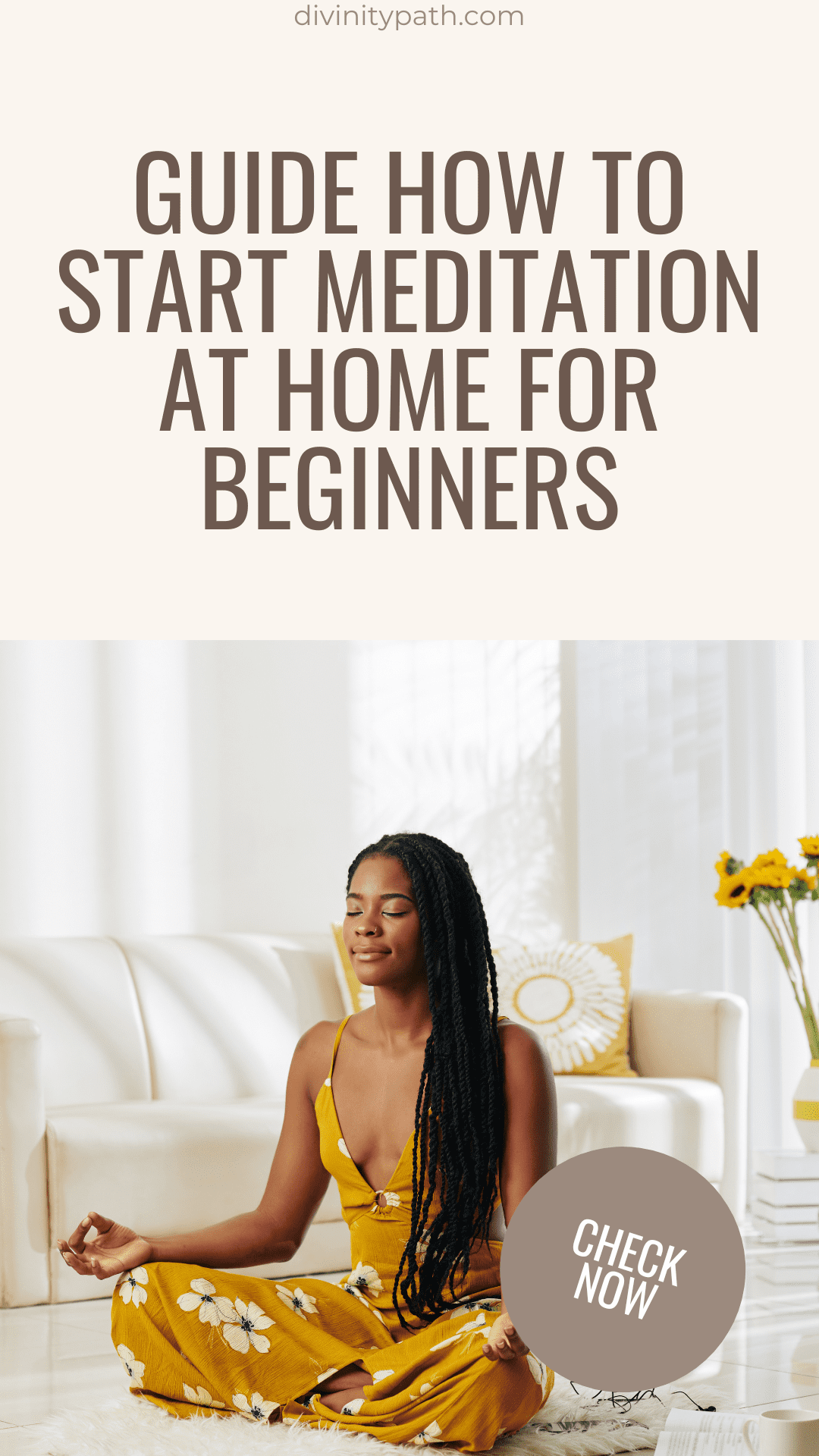
A Simple Guide on How to Start Meditating as a Beginner
1. Where will you meditate?
Your first task is to find a comfortable and quiet place where you will practice meditation. Consider a space where you won’t be disturbed by distractions or noise. It could be your living room, bedroom, or if possible, meditating by the sea, in the forest, where you can further enjoy the sounds and scents of nature. If you live with roommates, let them know that you need peace during meditation, and ask them not to disturb you. When I lived in the city, I enjoyed finding a quiet corner in the park where there were few people and thankfully no traffic noise to disrupt my meditation.
2. Equipment for comfortable meditation
No, don’t worry, you don’t need anything special or expensive. If you’ll be sitting on the floor, I recommend using a yoga mat or a cushion for sitting, but if you don’t have either, a towel or rug works well too. Some people also meditate on a chair or on their bed. The most important thing is that you’re comfortable.
For added ambiance, if you’re meditating at home, you can light a candle or use incense before meditation.
3. Meditation posture
The classic meditation posture is sitting cross-legged with hands resting on the knees. However, you can find your own position that feels more comfortable, as that’s the only way to achieve the desired effect. It’s important to keep the spine straight throughout meditation, mainly to ensure unhindered breathing. Some people find that a meditation cushion helps with posture.
4. Choose the right time for meditation
Since meditation is a time for relaxation, it depends on you which part of the day you dedicate to meditation. The important thing is to maintain consistency. For me, the best time is before bedtime, where I calm my body and cleanse my energy, or in the morning, as I prepare for a fresh start to the day. Choose a time that best fits into your daily routine.
5. Don’t meditate on a full stomach
Experts suggest not meditating when you’re hungry, as you’ll only focus your attention on food. At the same time, a full stomach doesn’t help either. Why? Because there’s a greater chance of falling asleep after a meal. So, plan your meditation two hours after eating.
6. Now, how to meditate?
Alright, you’re ready to meditate, let me introduce you to the process:
- Sit down, ensuring you have a straight spine. Be comfortable but not too much so that you drift into sleep. Choose a position that suits you. We discussed the classic meditation posture earlier, where the legs are crossed, but you can also have your legs extended in front of you or folded under your body so you sit on your heels.
- Relax your respiratory system to allow smooth breathing. Breathe through your nose, keeping your mouth closed. Pay attention to your shoulders so you’re not hunched too far forward.
- Place your hands on your knees, palms facing either the ground or ceiling. Alternatively, you can cup your hands or place one palm over the other. You can also focus on yogic mudras, where there are various hand positions.
- Close your eyes and focus on your breathing. Listen, feel your inhale, and exhale. Observe your thoughts, let them wander through your mind. (At the end of meditation, you can use a journal to write down any thoughts that occurred during meditation, what you noticed, how you felt…)
7. Use music
I’ve found that relaxing music without vocals suits me when I meditate at home. If you’re considering this, YouTube is full of meditation music options; choose your desired one and play it on your preferred device. Play it at a suitable volume so you can still perceive your body.
8. Observe your thoughts
It’s almost inevitable that your attention will leave your breath and wander to various thoughts. When you notice your mind wandering, observe those thoughts as if you were a bystander. Then gently redirect your focus back to your breath. Don’t judge or get angry with yourself. Accept it as normal. With consistency, you’ll notice that thoughts arise much less frequently, and you’ll be much more grounded in the present moment.
9. Transitioning back slowly
Let your return to the “ordinary world” be gentle and slow. When you open your eyes after meditation, there’s no need to jump up and rush into your day. Open your eyes gently, sit for a while longer, become aware of your body and surroundings, stretch your body, take a few more deep breaths, and then continue with your day.
Common Questions for All Meditation Beginners
How long should I meditate?
Everyone will answer this differently; some will say 10 minutes, others 20 minutes. Personally, I don’t focus on time; I meditate for as long as it suits me. Because I have music playing during meditation, I usually see how many minutes I’ve meditated at the end. And it varies completely; sometimes 9 minutes, sometimes 15 minutes, so I believe there’s no need to put unnecessary pressure on yourself. It’s commendable just to make an effort to incorporate meditation into your daily routine. However, if you’re aiming for a specific goal, using a timer or alarm can help with that.
Do I need to prepare before meditating?
Many advocate for warming up before meditation. Sukshma yoga can be useful in improving your relaxed posture while sitting and the flow of energy. There are also other preparations, such as: setting an intention for meditation (e.g., more peaceful, stress relief).
You can also set a clear goal for meditation, such as not getting angry or judgmental when your thoughts wander during meditation. You can consider visualization before meditation; I often visualize inhaling fresh and positive energy while exhaling negative and toxic energy. Give it a try.
Should I meditate with music or in silence?
The decision is entirely yours; some can’t imagine meditation without ZEN music, while others prefer silence.
How do I know I’m meditating correctly?
When you feel calm, connected with yourself, and free from irritability and bad moods after meditation, you know it has had a positive impact on you. This is why meditation is often mentioned as beneficial for mental health. Regardless of what you’re facing in life, calming your body is highly beneficial.
Unveiling The Best Practices For Awakening Kundalini Energy
How many times a day should I meditate?
It’s entirely up to you; meditation isn’t harmful. So, no matter how many times you meditate, it will benefit you.

Should I keep my eyes open or closed?
There are no rules here either; try both. If you have your eyes open, focus on a specific point and practice conscious breathing. When we find ourselves in a dark situation where something provokes our anger, we usually consciously close our eyes and take a deep breath. Interesting, isn’t it? Personally, I always have my eyes closed unless I’m meditating while showering or walking.
Natural Ways To Improve Mood And Boost Energy Levels
Is It wrong if I can’t stay still?
It’s entirely normal to sometimes feel itchy or like your leg has “fallen asleep.” Regarding itching, I usually consciously convince myself not to scratch. As for discomfort-related movements, simply change your position to continue meditating.
What are the benefits of meditation?
I don’t think you’ll find anyone who will advise you that meditation is bad. There are numerous studies worldwide on the topic of meditation, and they all attribute numerous benefits to it. For example: an excellent tool for reducing stress responses, reducing physical tension and pain, helping with insomnia and improving sleep quality, increasing a sense of energy and vitality, inner peace, better relationship responses, and improved focus, meditation promotes awareness, meditation helps with understanding emotions (while meditating, we observe our thoughts, worries, feelings, emotions, while taking note of all observations).
8 Simple Ways To Manage And Relieve Stress At Home
Are there advanced meditations?
Yes, these include Vipassana meditation, Jhana meditation, Zen meditation…

